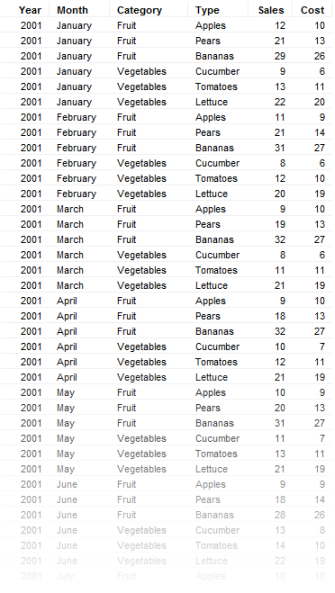
A cross table is a two-way table consisting of columns and rows. It is also known as a pivot table or a multi-dimensional table. Its greatest strength is its ability to structure, summarize and display large amounts of data. Cross tables can also be used to determine whether there is a relation between the row variable and the column variable or not.
Optionally, the cross table can display grand totals for columns, rows, or for the whole measure. It can also display subtotals for columns,
Note: The aggregated value for subtotals and grand totals is not calculated on the values shown in the cross table, but on the underlying row values. This means that if you hide rows on the Sorting page or if you are using Show/Hide Items rules, then the grand totals or sub totals will be the sum of all values and not the sums of the visible values.
Example:
Below is a cross table showing sales figures for different types of fruits and vegetables.

The same data displayed in a regular table takes up far more space and it is much more difficult to get an overview:

All visualizations can be set up to show data limited by one or more markings in other visualizations only (details visualizations). Cross tables can also be limited by one or more filterings. Another alternative is to set up a cross table without any filtering at all. See Limiting What is Shown in Visualizations for more information.
See also: